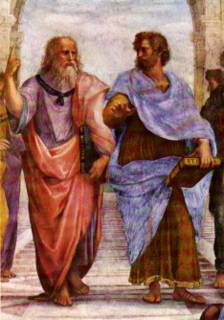An INTERVIEW with Dr. Wolfgang Ketterle
What do you see for the next five years of research on Bose-Einstein condensation?
One goal is the use of condensates for advancing atom optics, to develop new or improved matter wave sensors. In condensed-matter physics, we have two big goals. We would like to use ultra-cold atoms to realize new forms of matter. You could call it designer matter. You take atoms, you turn on a magnetic field, you adjust the interactions between the atoms, shape the external potential, maybe add a lattice by interfering laser beams, maybe add magnetic fields, maybe add a spin mixture. In this way, you’ve created a form of matter that shows, in a very clean way, properties like anti-ferromagnetism or different forms of magnetic ordering, superfluid behavior. The other big goal would be to realize new forms of superfluidity. That would hopefully help to close the gap in our understanding of high-temperature superconductivity. That’s my dream.
It's as if if someone wanted to map the very nature of particle creation, what roads would lead to a most appropriate solution to Mendeleev's table of matter idenfication scale, that we could have said this situation has an outcome. We might say that this particle is the very beginning, expressed in nature, inhernet in the outcome of the standard model.
The Tao of Quantum Interrogation
A detective limited to the realm of classical physics is in trouble. He can go into a completely darkened room, and pry off the lid of the crate. Then what? If there really is no light at all -- if no photons at all hit the trigger element -- then he gets no information. If, on the other hand, a single photon hits the element, well then by definition there is a loud explosion, and the detective knows that this was a good bomb. There seems to be no way to find the good bombs without always exploding them.
You know I have this picture in mind. If I had thought it holographical by nature, what constituted the different "views of the picture"? If I were to look at it from coordinated references, what would say that from this "x" angle, that the contituents of the picture, y and z, can be assumed ?
A Hint of Things To Come continue from Quantum Interrogation above
Finally, another avenue we are currently exploring is to extend the above techniques to allow two-dimensional imaging of an object. As a simple example, one could then make an in situ movie of a Bose-Einstein condensate without blowing it up, since very few of the photons actually end up being absorbed by the ultra-cold condensate atoms. (Practically speaking, however, the latest far-off-resonance methods of Ketterle et al. are likely to be more....practical.)
In conclusion, it is not altogether clear what wonderful applications the principles of interaction-free measurements will have, but it is certain that some very interesting physics is yet to be uncovered.
It's difficult for my layman mind to grasp this. but I am trying. The question here are the result of the experiment on Quantum Interrogation. It's as if the question itself, saids that the other aspects of the result are immediately apparnet when observed as the result in the x direction.

 PLato saids,"Look to the perfection of the heavens for truth," while Aristotle saids "look around you at what is, if you would know the truth" To Remember: Eskesthai
PLato saids,"Look to the perfection of the heavens for truth," while Aristotle saids "look around you at what is, if you would know the truth" To Remember: Eskesthai